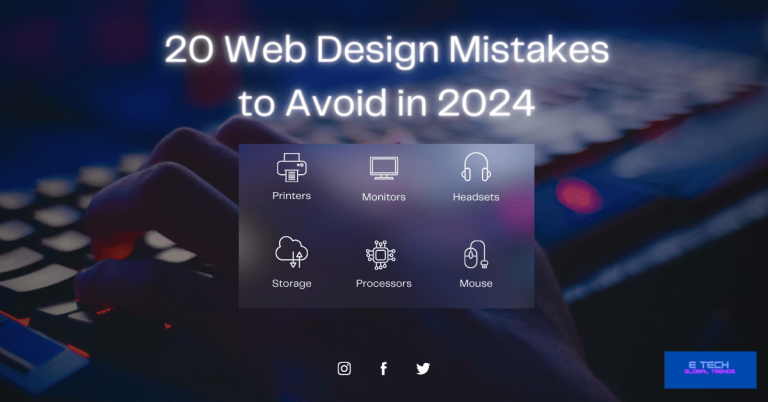Is your WordPress Website Security Enough?
Is your WordPress Website Security Enough?
WordPress hacking figures are huge!90,000 attacks per minute, 13000 per day? What? OMG! Is that true? What does it mean? Am I safe or not? The sad truth is you are not safe! Well, how do I know that technically? The actual figures are different. So, let’s dive deep into this matter. Don’t worry, there are plenty of solutions for wordpress web security.“Is your WordPress Website Security Enough?” is today’s presentation. Are you ready to go?
Stay tuned until the end.
Firstly, will see at your end, if you are a wordpress website administrator, will check back on your live site. Have you ever tested for a security analysis yet?
If not, does it mean you are confident with the Website’s security? But keep in mind this web security analysis is not a one-time check! It’s a process of an ongoing task. Day by day WP hackers may find weak security points. Then they try to take advantage of it. It means not every hacker or every weak coding point may cause security breaches.
The thing is vulnerability increases. Or the website will close to an attack.
What type of risks may occur on wordpress websites?
What can happen to the WordPress website?
Several frequent security risks that a large number of WordPress users face include.
1.0 Brute force attacks
In order to access your website, attackers try a large number of login and password combinations. It’s similar to someone attempting to unlock a lock with every key in their keychain. check here for more info.
2.0 DDoS attacks
These are a strategy to send a tonne of traffic to your website, making it crash. It is comparable to a throng of individuals barging into a store and preventing normal customers from shopping.
3.0 SQL injections
In this scenario, hackers can access and change the database on your website. It appears as though someone broke through your house’s rear door.
4.0 Malware
Malware may infect WordPress websites in the same way that viruses can on PCs. They may be employed for a number of nefarious purposes, including obtaining private data or even taking over your website.
5.0 Cross-site scripting (XSS).
It occurs when hackers infiltrate your website with harmful code so that it may run in the user’s browser. Imagine if a note were to somehow interfere with your home security system when you opened it after it slipped into your mailbox.
Now you see the matter is not simple.
But, to prepare for evil, before he enters your home.
In this internet world, nothing is fully secure!
So, prepare for the worst. Ready for the best. That’s it.
By the way, how do I know that the site was hacked?
Of course, there are some significant signs you may recognize. it’s not magic and if you closely check the site health technically and some of the other symptoms, can understand what is going on.
Let’s see how;
How do I know if malware has infected my WordPress website?
Unfortunately, if you feel there is something wrong. You can take the following actions to find out whether malware has infiltrated your WordPress site.
Scan your website
This is the first thing you must do. Make use of a trustworthy malware detection tool or website security scanner made especially for WordPress. These programs look for strange files and known malware signatures on your website.
Well-liked choices consist of-
- MalCare,
- Wordfence Security, and
- Sucuri SiteCheck.
Keep an eye on website behavior
I will tell you my story.
Last year I felt something unusual thing on my site. Normally, I logged every day even though I don’t have specific work. I knew my site was targeted for brute-force attacks. At that stage it was normal.
But suddenly I understand my site is making huge traffic, without knowing a real reason. When I checked back Google Search Console page views, there were a unusually HTML pages that had been added every day in hundreds.
So I understood that someone was doing this tactfully. Always Page Crawler finds them as
“ PAGE NOT FOUND”
Luckily it was not a hacking but the result of a “bad bot”.
So, I immediately track them about the recent 1000 pages and submit a “DisAvow” request to Google.
If your website faces any unexpected or odd behavior, such as;
- sluggish loading speeds,
- strange pop-ups, or
- redirection to other websites,
pay attention to it. These could definitely indicate the presence of malware.
Examine the files on your website
Look for any strange or questionable files in your WordPress installation.
Keep an eye out for files in strange directories or with unexpected names, particularly in the folders associated with your theme and plugins.
Review Scripts and Code
Look over your theme files, and plugins, including custom code to make sure there aren’t any strange or questionable code snippets.
It is crucial to carefully inspect these locations since harmful code is frequently injected there by malware.
Keep an eye on Search Engine Results
A sudden drop or instant increase might be unusual.
Look for your website using search engines, then have a look at the results.
Malware may be present on your website if it has been banned or marked as potentially hazardous.
Remember if there is a virus attack on your site, google will track it and initially, there will be a manual penalty for your website.
because it’s even more harmful to the visitors of the respective site.
My hosting provider once said that.
“Please be alert on this matter, if Google blacklisted your site, it’s very difficult to recover.”
Examine Website Security Logs
This can be done by yourself. Keep an eye out for any unauthorized access attempts or strange behavior in the security or server logs of your website. Odd entries or persistently unsuccessful login attempts may indicate a malware assault.
There is an error file created often, when there is a usual thing happening. Locate cPanel>public_html> error file{read me, text}. Just download and open it on Notepad. View it.
Track Website Traffic
Make use of technologies such as Google Analytics to analyze the traffic to your website. Keep an eye out for any sudden surges or strange patterns that could point to nefarious activity.
Ask a Security Expert
Still, if you aren’t sure, this is the last option.
Seek a piece of advice from a qualified website security expert is advised if you are uncertain or unable to recognize malware on your own. They may carry out an exhaustive analysis and assist you in efficiently cleaning up your website. while you have to contact your hosting provider as well. They may have solutions for these kinds of matters.
My opinion is the first talk to Hosting service. Take suggestions from them too. keep in touch with them. until the problem is solved.
Don’t worry. There are many solutions for hacked sites. but immediate recognition is important.
At the end of this article, we mentioned the “ worst cases of a hacked site
Strong security measures, such as frequent backups, the use of dependable themes and plugins, updating WordPress, and the use of security plugins, are essential for WordPress websites since it’s always better to prevent than to treat.
Remember that in order to limit possible harm and safeguard the information of your visitors, you should take immediate action if you believe that your WordPress website has been compromised.
What can I do to secure my website?
Of course, read this guideline and follow it 100%!
10 best steps to improve your website’s security.
Let’s start from scratch.
Step 01:update to the latest wordpress version
Does my wordpress have the latest version? Well, if not update it immediately. Why are we gonna tell you that again and again?
It’s the starting point.
Sometimes your site is having technical issues with updating. Make it clear.
Work with the newest one. The WordPress official site warns for same Then you pass the 1st step.
What else?
Step 02: Employ TLS/SSL:
To encrypt information between users’ browsers and your website, install an SSL/TLS certificate. In addition to protecting sensitive data, like login passwords and personal information, this can aid in the prevention of man-in-the-middle attacks.
Step 03: Configure Firewalls
Put firewalls in place to stop illegal users from accessing your website and to stop attacks like Distributed Denial of Service (DDoS).
Step 04: 0Make regular backups of your website
Certainly, this is funny and easy. You can use a plugin like UpdraftPlus.
These 2 plugins are ok to use. And they are trusted and secure.
While through cPanel or FTP is also possible. That’s the easiest and safest way.
Read here to see detailed guidelines.
Creating regular backups of your website can assist in guaranteeing that, if it is hacked, you can swiftly restore it to its prior condition.
Step 05: secure login function.
This is also an important task.
Use Strong passpharses.
Many times an administrator enters the WP dashboard by checking the password/ passphrase. Make it strong. And change it periodically.
How does make it strong your passphrase?
Make characters more than 18. 21 or 24 are best. Never use a dictionary word there. And cannot use “/” inside characters. it will not work.
( I made this mistake and learned)
If possible,
Add an extra layer;
It’s an additional layer
2-factor authentication. it will directly inform your 2nd named device. Without a code, you too cannot enter the dashboard.
login attempt control
The best way to do this use a plugin like “Limit Login Attempts”
Step 06:use a secure and better hosting service.
This is not directly affected. But it can be a matter when it loses the best security discipline by its side.
Example:
- not keeping regular backups,
- security features like firewalls and
- malware scanning.
Step 07: Keep file Permissions on the correct values
This you can do via FTP.(cPanel)
The correct values are;
For folders: 744 or 755
For files : 644 or 640
You may stop illegal access to the files on your website by setting file permissions correctly on your server.
Step 09: Turn off the editing of files
To avoid making direct modifications to the source files of plugins and themes, disable the file editing function inside the WordPress dashboard.
Step 10: Audits of security
Conduct security audits regularly to look for weaknesses or unusual activities.
What do plugins do with the security?
It’s not always possible to properly safeguard a website with WordPress plugins alone, even if they can assist make it more secure. A multi-layered strategy is needed to secure your website since there are several possible flaws that hackers might take advantage of.
You may take the following extra actions to improve the security of the WordPress website.
1.0 Maintain WordPress and plugin updates
Verify that WordPress and all of your installed plugins are up to date. Updates frequently contain security patches & bug fixes.
2.0 Employ secure login information
Don’t use the default “admin” username; instead, use difficult passwords. To create and save secure, one-of-a-kind passwords, and passphrases. think about utilizing a password manager.
Avoid using public WIFI or public ISPs.
This is a common case. It’s wise enough not to log in on the WP dashboard, via them. They are usually vulnerable.
Are my plugins vulnerable or not?
This is the worst point. Many plugins with outdated versions carry this vulnerability.
Even if hackers find some weak point in coding, they can take advantage. Of course, they keep searching all alone! Rarely, some unpopular authors make plugins without proper updates.
They are too will cause security problems.
A few months ago there were some vulnerable points found in the Popular page builder plugin- Elememtor!
What is the worst case that can happen via low wordpress website security?
A good question. If you know the danger. Then you can prepare for the worst.
A multi-layered assault that compromises the whole site and could reveal sensitive data is the worst-case situation for WordPress security. This is how things may transpire:
Vulnerability Exploited.
An attacker finds a flaw in a theme, plugin, or core WordPress installation that is out-of-date. They might be able to insert malicious code into the database using this vulnerability, which is similar to SQL injection.
Total Takeover
The attacker fully controls your website by using the vulnerability to access your administrator account.
After that, they can…
Vandalize your website
Put dangerous material on your website instead, such as malware dissemination or phishing schemes.
Set up backdoors
This is a common conflict nowadays. Construct covert methods to keep visitors to your website logged in even after you apply security updates.
Take information
This might contain financial details, confidential material, or user data (passwords, emails, and usernames).
Launch additional assaults
Utilize your hacked website to propagate malware or conduct assaults on other websites.
Damage to Collateral, There may be dire repercussions.
Reputational Damage
When your website is hacked, people will no longer trust you.
SEO Impact
Your website may be blocked by search engines, which would reduce its exposure.
Legal Difficulties
Depending on the pilfered information, you may be in legal hot water.
Financial Loss
To clean up the breach and get your data back, you could have to spend a lot of money.
What makes this situation more terrifying is this. or it could be worse depending on your specific situation.
Complexity
It is challenging to identify and eliminate a multi-layered assault.
Data Loss
Exposure to sensitive data may have additional and enduring effects.
Exposure to sensitive data may have enduring effects.
Rehab Difficulties
Restoring data and cleaning up a compromised website may be difficult and costly tasks.($250-350 per hour for a checking and repair for an engineer)
OMG! Just see how complicated things are…
All of them can be true. If you run the web security well,
“They can do nothing”
Fortunately, the likelihood of this occurring may be greatly decreased by adhering to good security measures including frequent updates, strong passwords, & security plugins.
Summary
Nothing is 100% safe on the internet. ( read it again)
The only way is keep maintain security and discipline everything possible. So, it’s an endless struggle.
Hope this content helps.
Cheers!
Read more on related topics here,penitration testing device







